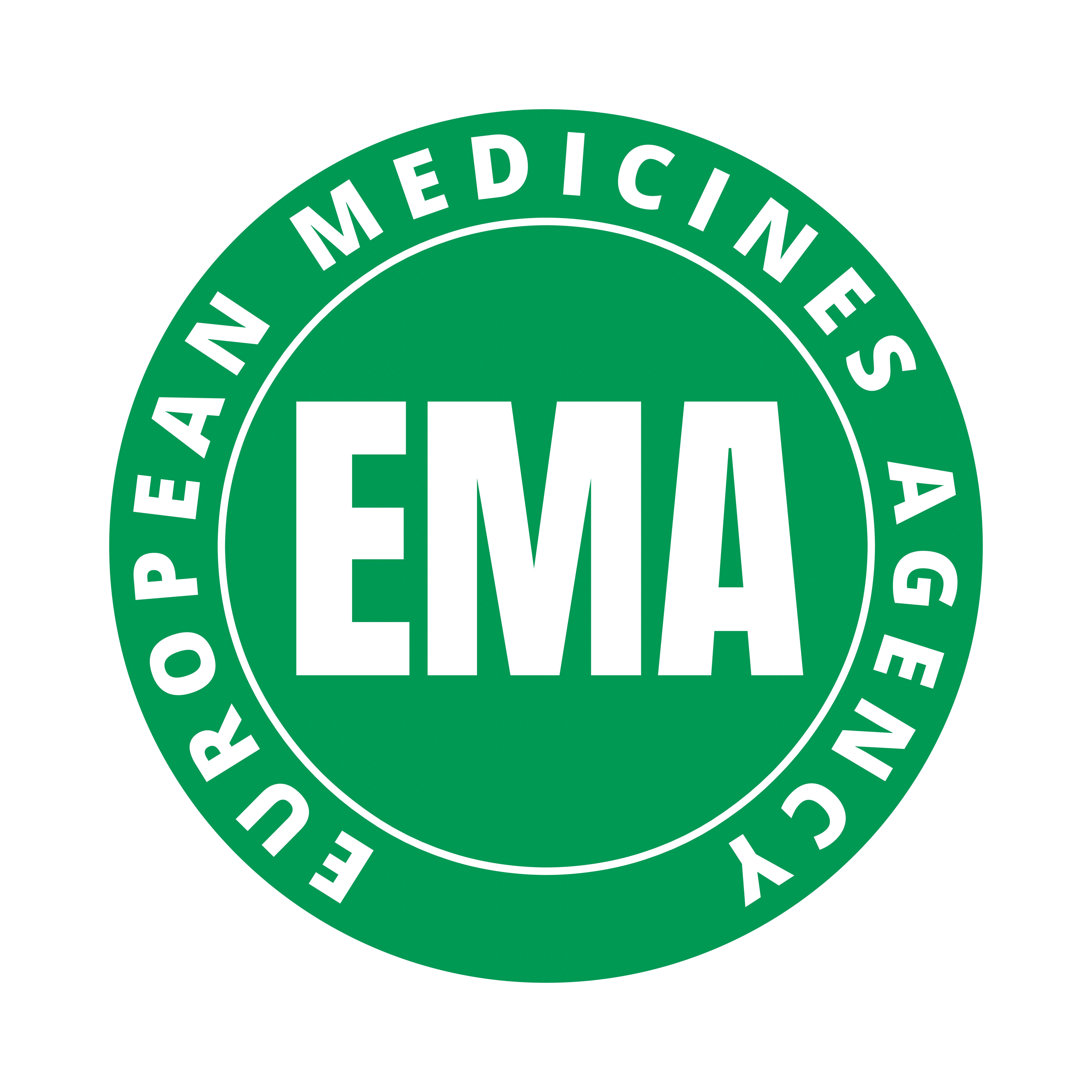- Center on Health Equity & Access
- Clinical
- Health Care Cost
- Health Care Delivery
- Insurance
- Policy
- Technology
- Value-Based Care
CHMP Recommends Mirvetuximab Soravtansine for FRα+ Ovarian Cancer
The European Medicines Agency's (EMA’s) Committee for Medicinal Products for Human Use (CHMP) has recommended the marketing authorization of mirvetuximab soravtansine (Elahere; AbbVie) for folate receptor alpha–positive (FRα+), platinum-resistant epithelial ovarian cancer.
This article was originally published on OncLive® and has been lightly edited.
The European Medicines Agency’s (EMA's) Committee for Medicinal Products for Human Use (CMHP) has recommended the marketing authorization of mirvetuximab soravtansine-gynx (Elahere; AbbVie) for the treatment of adult patients with folate receptor alpha–positive (FRα+), platinum-resistant, high-grade serous epithelial ovarian, primary peritoneal, or fallopian tube cancer who have received 1 to 3 prior treatment regimens.1
The European Medicines Agency's (EMA’s) Committee for Medicinal Products for Human Use (CHMP) has recommended the marketing authorization of mirvetuximab soravtansine (Elahere; AbbVie) for folate receptor alpha–positive (FRα+), platinum-resistant epithelial ovarian cancer. | Image Credit: Ricochet64 - stock.adobe.com

This decision was supported by findings from the phase 3 MIRASOL trial (NCT04209855) where patients who received mirvetuximab soravtansine (n = 227) achieved a median investigator-assessed progression-free survival (PFS) of 5.6 months (95% CI, 4.3-5.9) vs 4.0 months (95% CI, 2.9-4.5) with chemotherapy (n = 226; HR, 0.65; 95% CI, 0.52-0.81; P < .0001).1,2 At 12 months, the restricted mean PFS was 6.13 months (95% CI, 5.62-6.64) with mirvetuximab soravtansine vs 4.72 months (95% CI, 4.21-5.23) with chemotherapy.3
Furthermore, the objective response rate (ORR) was 42% (95% CI, 36-49) in the mirvetuximab soravtansine arm, including a complete response rate of 5% and a partial response rate of 37%.2 In the chemotherapy arm, the ORR was 16% (95% CI, 12-22; P < .0001), and all responses were PRs.
The median overall survival (OS) was 16.5 months (95% CI, 14.5-24.6) with mirvetuximab soravtansine vs 12.7 months (95% CI, 10.9-14.4) with chemotherapy (HR, 0.67; 95% CI, 0.50-0.88; P = .0046). The median duration of response was 6.77 months (95% CI, 5.62-8.31) among the 96 responders in the mirvetuximab soravtansine arm vs 4.47 months (95% CI, 4.17-5.82) among the 36 responders in the chemotherapy arm (HR, 0.62; 95% CI, 0.40-0.97).3
“Following many years of development by the ImmunoGen team that is now part of AbbVie, we are hopeful to make mirvetuximab soravtansine available to eligible patients with ovarian cancer in the European Union,” Roopal Thakkar, MD, executive vice president of research and development and chief scientific officer of AbbVie, said in a news release.1 “This positive opinion [from the CHMP] recognizes the unmet need for certain patients with platinum-resistant ovarian cancer.”
The European Commission is expected to make a decision about this indication for mirvetuximab soravtansine later in 2024.
MIRASOL evaluated the efficacy and safety of mirvetuximab soravtansine compared with investigator’s choice of single-agent chemotherapy, including pegylated liposomal doxorubicin, topotecan, or weekly paclitaxel, in patients with platinum-resistant, high-grade serous ovarian cancer whose tumors expressed high levels of FRα, defined as expression on at least 75% of cells with at least 2+ staining intensity. Patients must have received 1 to 3 prior lines of therapy.
Patients were randomly assigned 1:1 to receive mirvetuximab soravtansine at 6 mg/kg once every 3 weeks, or the physician’s choice of chemotherapy consisting of paclitaxel at 80 mg/m2 on days 1, 8, 15, and 22 of a 4-week cycle; pegylated liposomal doxorubicin at 40 mg/m2 on day 1 of a 4-week cycle; or topotecan at 4 mg/m2 on days 1, 8, and 15 of a 4-week cycle or 1.25 mg/m2 on days 1 to 5 of a 3-week cycle.3
Investigator-assessed PFS served as the primary endpoint of the trial; key secondary endpoints included ORR and OS.1
Regarding safety, 96.3% and 93.7% of patients in the mirvetuximab soravtansine and chemotherapy arms, respectively, had any-grade adverse effects (AEs).3 In the mirvetuximab soravtansine arm, the most common any-grade AEs were blurred vision (40.8%), keratopathy (32.1%), abdominal pain (30.3%), and fatigue (30.3%).
AEs of grade 3 or higher were observed in 41.7% of patients in the mirvetuximab soravtansine arm vs 54.1% of those in the chemotherapy arm. Serious AEs occurred in 23.9% and 32.9% of patients in these respective arms. In total, 9.2% of patients in the mirvetuximab soravtansine arm discontinued treatment due to AEs, the most common being blurred vision (n = 3) and pneumonitis (n = 3). One patient each in the mirvetuximab soravtansine and chemotherapy arms died due to a treatment-related AE (neutropenic shock and septic shock, respectively).
In March 2024, the FDA granted full approval to mirvetuximab soravtansine for the treatment of adult patients with FRα+, platinum-resistant, epithelial ovarian, primary peritoneal, or fallopian tube cancer who have previously received 1 to 3 prior systemic therapies.4 This decision was backed by findings from MIRASOL.
Marketing authorization submissions for the agent are under review in several other countries.1
References
- AbbVie receives positive CHMP opinion for mirvetuximab soravtansine (ELAHERE) for the treatment of certain adult ovarian cancer. News release. AbbVie. September 20, 2024. Accessed September 20, 2024. https://news.abbvie.com/2024-09-20-AbbVie-Receives-Positive-CHMP-Opinion-for-Mirvetuximab-Soravtansine-ELAHERE-R-for-the-Treatment-of-Certain-Adult-Ovarian-Cancer
- Elahere. Prescribing information. ImmunoGen. 2024. Accessed September 20,2024. https://www.accessdata.fda.gov/drugsatfda_docs/label/2024/761310Origs005lbl.pdf
- Moore KN, Angelergues A, Konecny GE, et al. Mirvetuximab soravtansine in FRα-positive, platinum-resistant ovarian cancer. N Engl J Med. 2023;389(23):2162-2174. doi:10.1056/NEJMoa2309169
- FDA approves mirvetuximab soravtansine-gynx for FRα positive, platinum-resistant epithelial ovarian, fallopian tube, or primary peritoneal cancer. FDA. Accessed September 20, 2024. https://www.fda.gov/drugs/resources-information-approved-drugs/fda-approves-mirvetuximab-soravtansine-gynx-fra-positive-platinum-resistant-epithelial-ovarian
